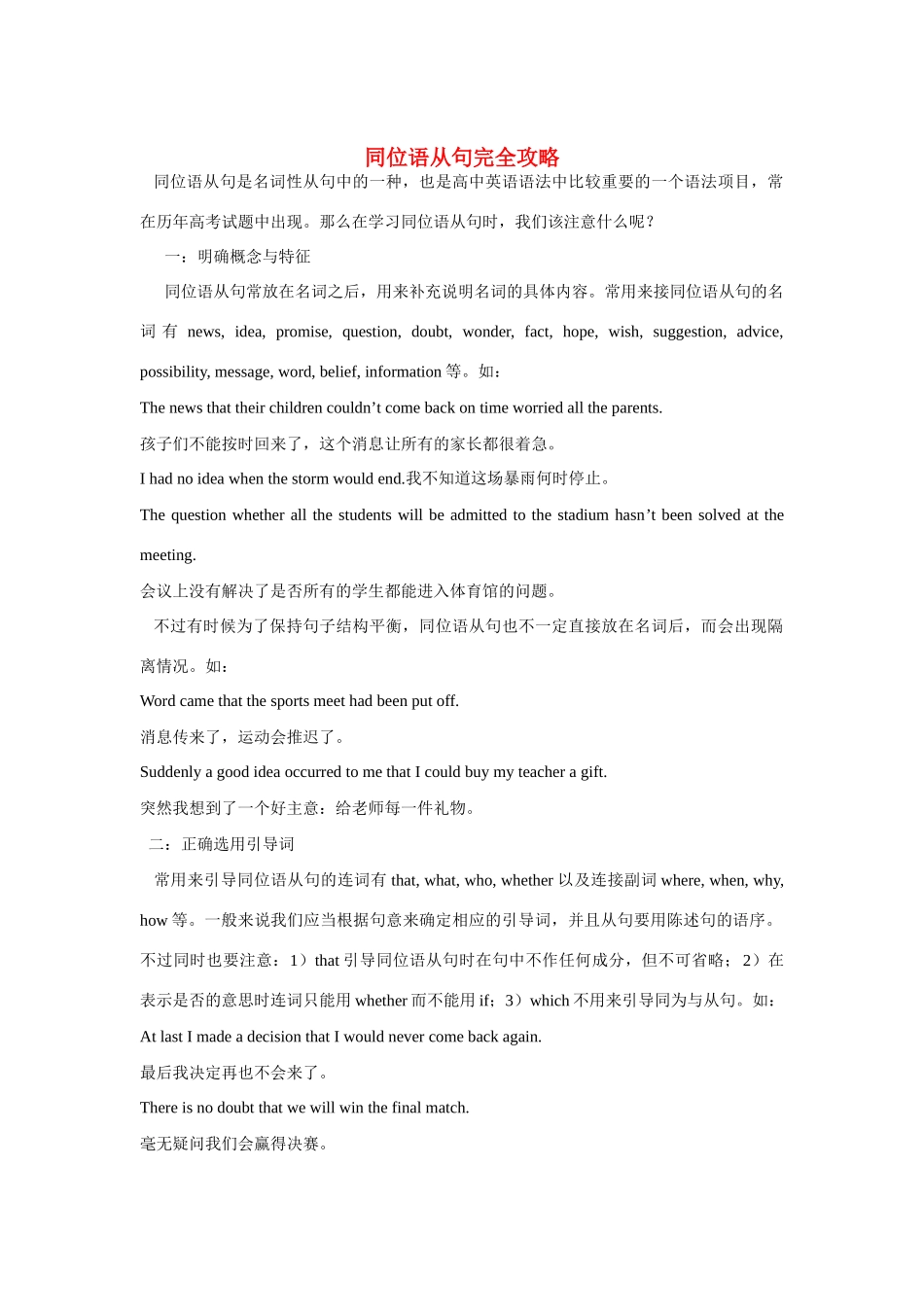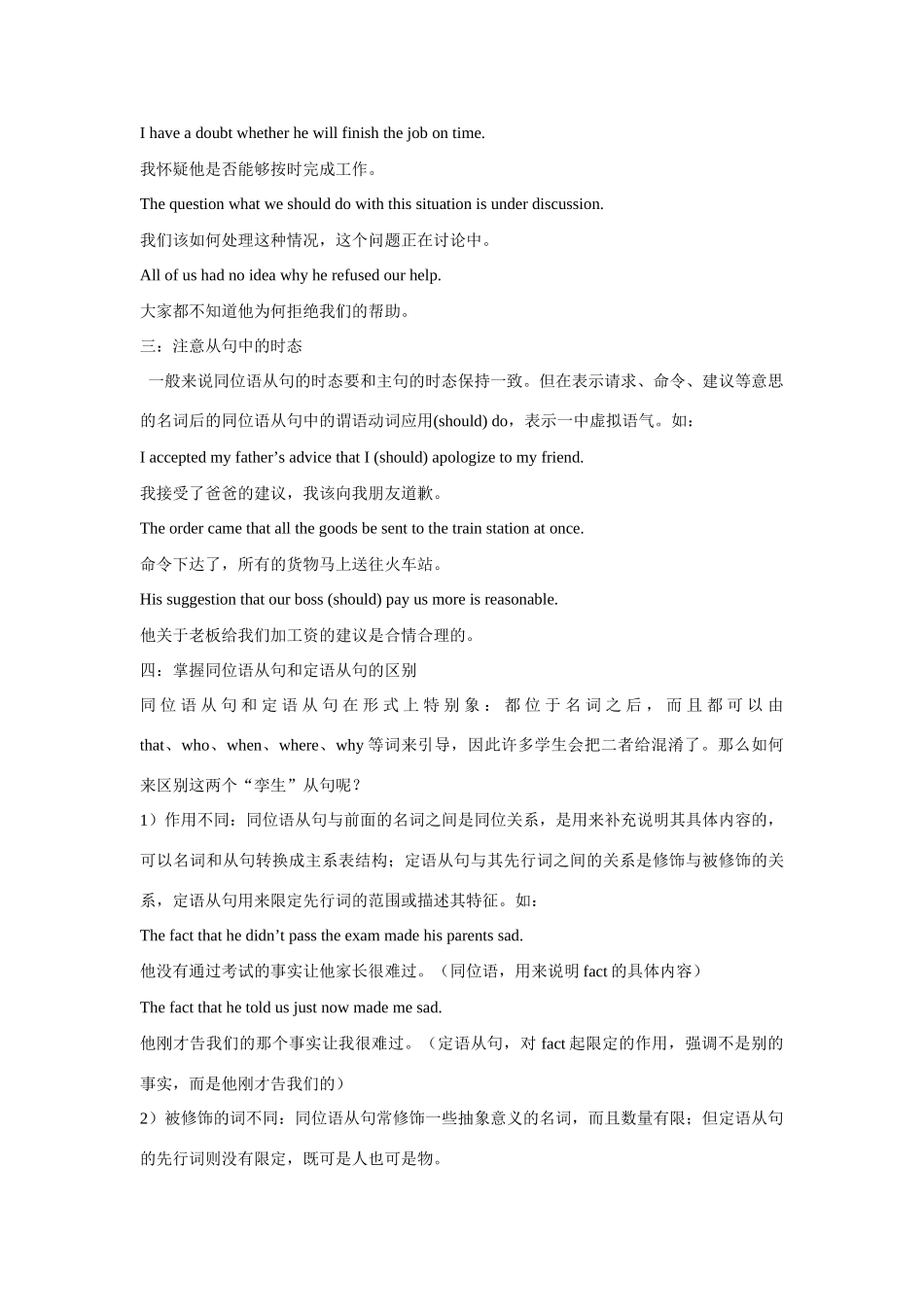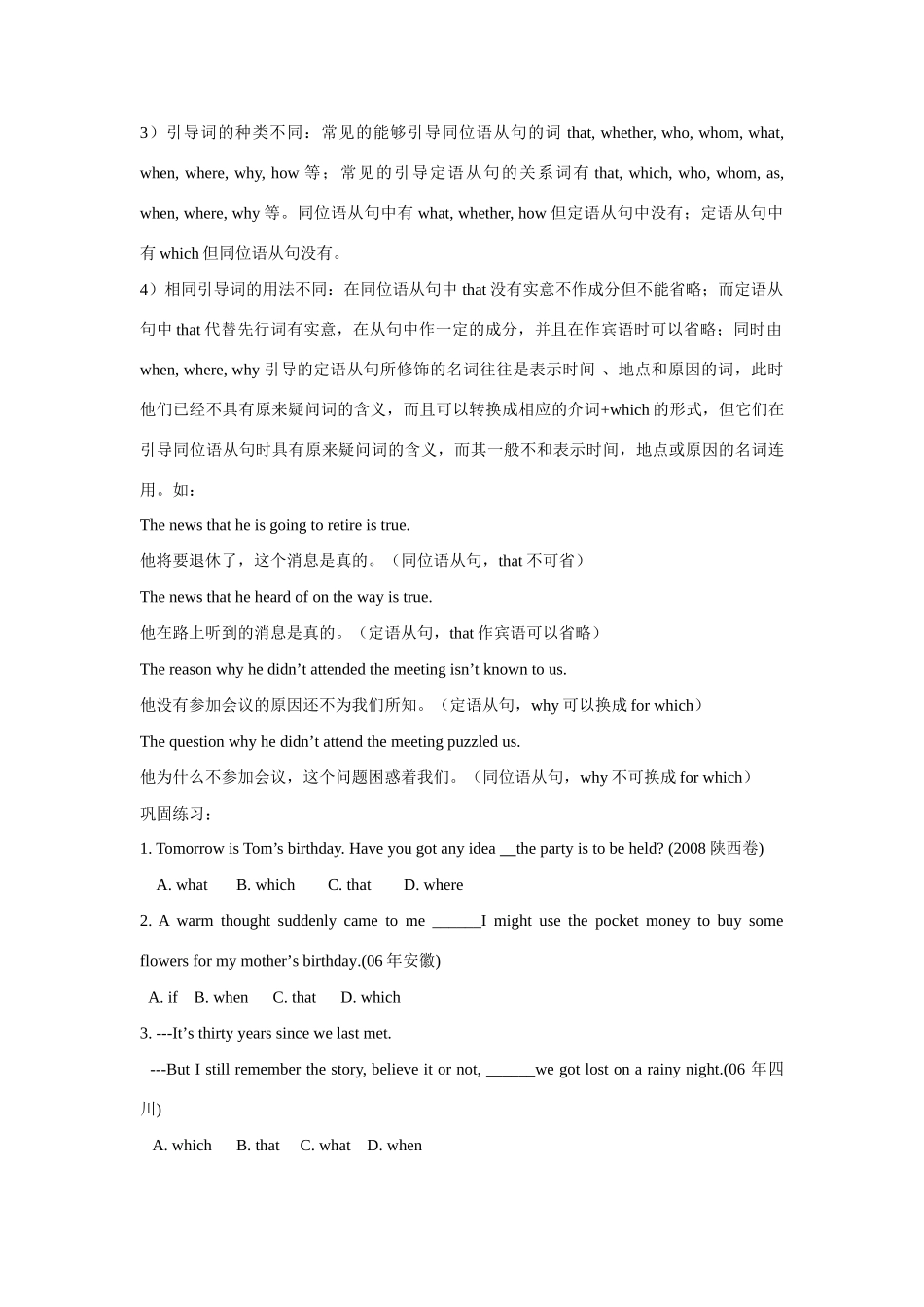同位语从句完全攻略 同位语从句是名词性从句中的一种,也是高中英语语法中比较重要的一个语法项目,常在历年高考试题中出现。那么在学习同位语从句时,我们该注意什么呢?一:明确概念与特征同位语从句常放在名词之后,用来补充说明名词的具体内容。常用来接同位语从句的名词 有 news, idea, promise, question, doubt, wonder, fact, hope, wish, suggestion, advice, possibility, message, word, belief, information 等。如:The news that their children couldn’t come back on time worried all the parents.孩子们不能按时回来了,这个消息让所有的家长都很着急。I had no idea when the storm would end.我不知道这场暴雨何时停止。The question whether all the students will be admitted to the stadium hasn’t been solved at the meeting. 会议上没有解决了是否所有的学生都能进入体育馆的问题。 不过有时候为了保持句子结构平衡,同位语从句也不一定直接放在名词后,而会出现隔离情况。如:Word came that the sports meet had been put off.消息传来了,运动会推迟了。Suddenly a good idea occurred to me that I could buy my teacher a gift.突然我想到了一个好主意:给老师每一件礼物。 二:正确选用引导词 常用来引导同位语从句的连词有 that, what, who, whether 以及连接副词 where, when, why, how 等。一般来说我们应当根据句意来确定相应的引导词,并且从句要用陈述句的语序。不过同时也要注意:1)that 引导同位语从句时在句中不作任何成分,但不可省略;2)在表示是否的意思时连词只能用 whether 而不能用 if;3)which 不用来引导同为与从句。如:At last I made a decision that I would never come back again.最后我决定再也不会来了。There is no doubt that we will win the final match.毫无疑问我们会赢得决赛。I have a doubt whether he will finish the job on time.我怀疑他是否能够按时完成工作。The question what we should do with this situation is under discussion.我们该如何处理这种情况,这个问题正在讨论中。All of us had no idea why he refused our help.大家都不知道他为何拒绝我们的帮助。三:注意从句中的时态 一般来...


